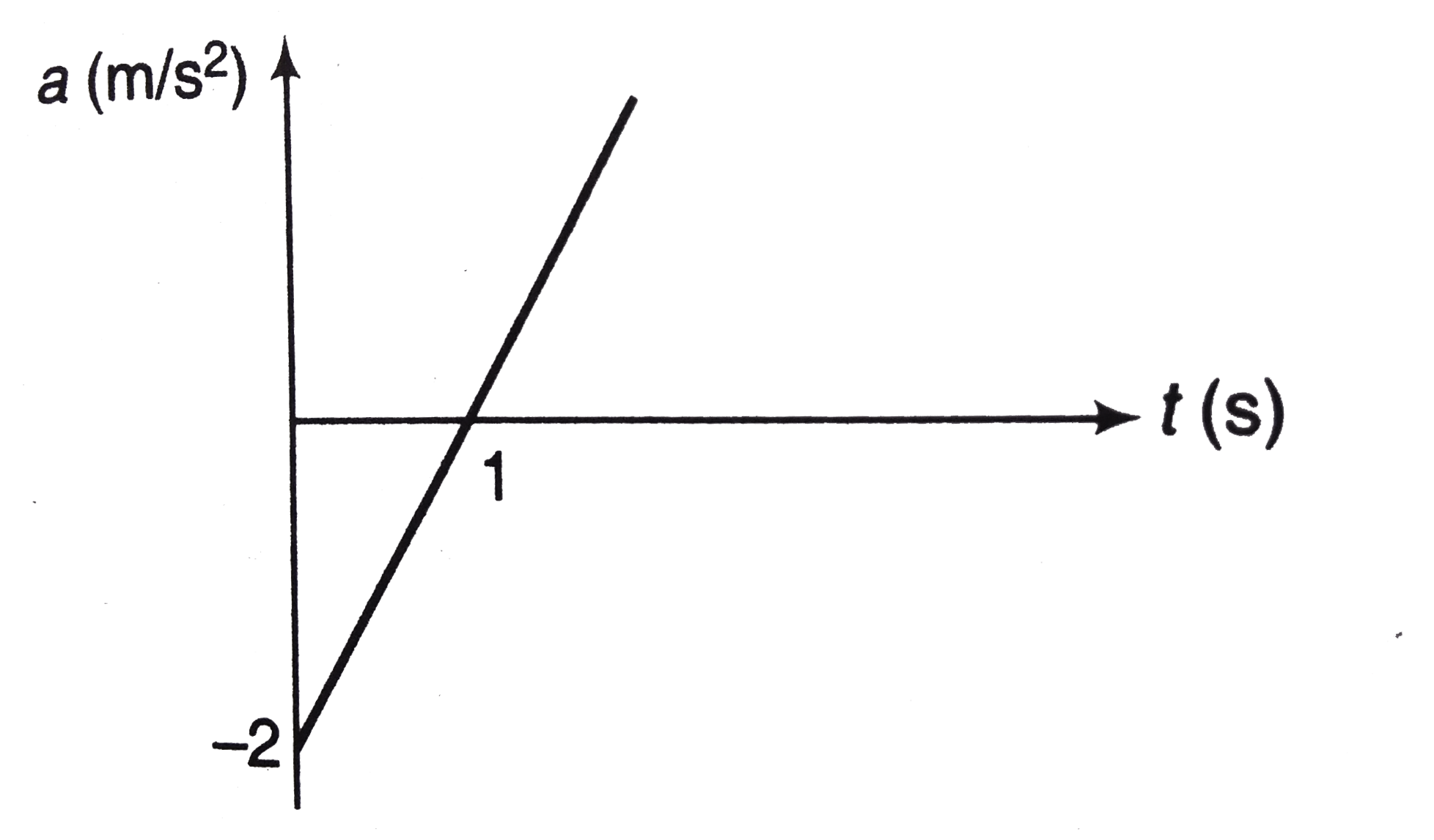Velocity of a particle varies with time as v=4t. Calculate the displacement of particle between t=2 to t=4 sec.Solution in Gujrati
∵dxdt=v∴x=∫vdt=∫4z4tdt=[2t2]42=2(4)2−2(2)2=32−8=24m
Topper's Solved these Questions
- MOTION IN A PALNEBOOK - ALLEN CHAPTER - MOTION IN A PALNEEXERCISE - EXERCISE-1
99 Videos
- MOTION IN A PALNEBOOK - ALLEN CHAPTER - MOTION IN A PALNEEXERCISE - EXERCISE-2
170 Videos
- MOTION IN A PALNEBOOK - ALLEN CHAPTER - MOTION IN A PALNEEXERCISE - Integer Type Question
3 Videos
- KINEMATICS-2DBOOK - ALLEN CHAPTER - KINEMATICS-2DEXERCISE - Exercise (O-2)
47 Videos
- NEWTON'S LAWS OF MOTION & FRICTIONBOOK - ALLEN CHAPTER - NEWTON'S LAWS OF MOTION & FRICTIONEXERCISE - EXERCISE (JA)
4 Videos
Similar Questions
The distance x of a particle moving in one dimensions, under the action of a constant force is related to time t by the equation, t=√x+3, where x is in metres and t in seconds. Find the displacement of the particle when its velocity is zero.
View SolutionThe velocity of a particle moving with constant acceleration at an instant t0 is 10m/s After 5 seconds of that instant the velocity of the particle is 20m/s. The velocity at 3 second before t0 is:-
View SolutionA stone is dropped from the top of a tower of height h. Aftre 1s another stone is droppped from the balcony 20m below the top. Both reach the bottom simultaneously. What is the value of h ? Take g=10ms−2.
View SolutionA particle is moving in xy-plane .At certain instant the components of its velocity and acceleration are as follows ux=3m/s,uy=4m/s,ax=2m/s2anday=1m/s2. The rate of change of speed at this moment is
View SolutionA piece of wire is bent in the shape of a parabola y=kx2 (y-axis vertical) with a bead of mass m on it. The bead can slide on the wire without friction. It stays at the lowest point of the parabola when the wire is at rest. The wire is now accelerated parallel to the x-axis with a constant acceleration a. The distance of the new equilibrium position of the bead, where the bead can stay at rest with respect to the wire, from the y-axis is:
View SolutionVelocity of a particle moving in a straight line varies with its displacement as v=(√4+4s)m/s. Displacement of particle at time t=0 is s=0. Find displacement of particle at time t=2s.
View SolutionThe acceleration of particle varies with time as shown.

(a) Find an expression for velocity in terms of t.
(b) Calculate the displacement of the particle in the interval from t=2s to t=4s. Assume that v=0 at t=0.
View SolutionA particle starts from rest on a straight path, Its acceleration is linearly varying with time, such that velocity of the particle at t=2 sec and t=4 sec is 6ms−1 respectively. Find acceleration of the particle at t=i sec.
View Solution(a) If s = 2t^(3)+ 3t^(2) + 2t + 8 then find time at which acceleration is zero. (b) Velocity of a particle (starting at t =0) varies with time as v= 4t. Calculate the displacement of part between t = 2 to t = 4 s
View SolutionIf the displacement of a particle is x=t3−4t2−5t, then the velocity of particle at t=2 is
View SolutionThe displacement x of a particle varies with time 't' as, x=3t2−4t+30. Find the position, velocity and acceleration of the particle at t = 0.
View SolutionPower supplied to a particle of mass 4 kg varies with time as P=(3t^(2))/(2) watt. Here t in second. If velocity of particle at t = 0 is v = 0, the velocity of particle at time t = 2s will be
View SolutionPower applied to a particle varies with time as P=(4t^(3)-5t+2) watt, where t is in second. Find the change its K.F. between time t = 2 and t = 4 sec.
View SolutionThe displacement x of a particle varies with time as x = 4t^(2) – 15t + 25 . Find the position, velocity and acceleration of the particle at t = 0.
View SolutionThe displacement r of a particle varies with time as x=4t^(2)-15t+25 Find the position, velocity and acceleration of the particle at t = 0
View Solutionयदि s=2t3+3t2+2t+8 हो, तो किस समय पर त्वरण शून्य होगा?
किसी कण का वेग समय के साथ v=4t के अनुसार बदलता है। t=2 से t=4 सेकण्ड के बीच विस्थापन की गणना कीजिए।
View Solution
